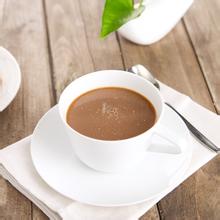Introduction to the characteristics of natural washing coffee
coffee beans
1. Bean selection:
The harvested fruit is placed in a tank of water, and the ripe fruit sinks, while the unripe and overripe fruit float up and can be rejected.
2, drying:
Put the selected ripe fruits on the square for 5-6 days until they are fully dried. At this time, the fruit turns dark brown and has a moisture content of 13%.
3. Shelling:
After drying, the peel becomes brittle and easy to fall off, which can be removed by machine. Enterprise farms usually set up their own shelling factories, small farms are handed over to the processing center for processing.
4. Selection and classification:
Fine farms will identify defective beans manually or by machine and pick them out and throw them away. The manual selection method usually uses a conveyor belt about 1 meter wide, with several female workers sitting on both sides to visually select the bad beans; some good farms even go through several selections until no defective beans are found. Machine selection rules use computers to identify and weed out defective beans, followed by a grading process that divides coffee beans into quality grades according to established criteria, with good coffee going to the specialty coffee market and bad coffee going to the commercial coffee market.
5. Polishing:
Dehusking can only remove the exocarp and endocarp, at this time, the silver film is still wrapped in the outer layer of the seed, you have to use a machine to remove this film. Then, fill the coffee beans into 60KG bags. The weight of bags varies slightly from region to region. Most of them use sacks.

Important Notice :
前街咖啡 FrontStreet Coffee has moved to new addredd:
FrontStreet Coffee Address: 315,Donghua East Road,GuangZhou
Tel:020 38364473
- Prev

The Flavor description characteristics of Yega Snow Flavor introduction of Fine Coffee beans by Taste treatment method
Yega Chuefei flavor G1 is the highest grade, generally more common are water washing G2 and sun G3, I prefer sun-washed Yega Chefe, which gives people a clear feeling, while the sun makes people feel more mellow and full-bodied, just like bathing in a sea of flowers. The sun-tanned G4Jing G5 is usually sold as Sidamo, one of the three major coffee producing areas in Egypt, yeah.
- Next

Introduction to the characteristics of Flavor description of Coffee Solar treatment by Natural Water washing
Ethiopian coffee beans introduce that the most sensible and practical way to understand the countries that produce coffee is to classify them into three major coffee growing areas in the world: Africa, Indonesia and Central and South America. Generally speaking, coffee grown in the vicinity has similar characteristics. If a particular bean is out of stock, the manufacturer and buyer of the comprehensive product will usually look for a nearby country.
Related
- What is the meaning of lactic acid fermentation with coffee bean treatment?
- How to judge the state of foam by sound?
- How does the latte pull out the unicorn pattern? Come to get for a little trick to improve the flower pull!
- Will flower pulling affect the taste of the latte?
- Do you know the history of coffee?
- The difference between honey treatment and sun washing what is raisin honey treatment?
- What kind of milk can a novice use to make coffee foam to keep the foam longer? The correct method and skills of milking tutorial sharing
- Why do washed coffee beans taste sour? Flavor characteristics of washed Coffee
- Introduction to the skill of how to practice the size and height of water injection around the circle of hand-brewed coffee
- How do beginners practice coffee flower drawing from scratch?

